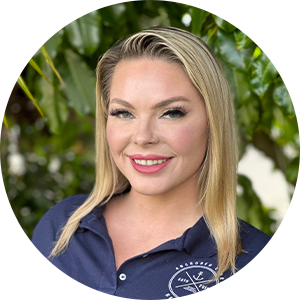Finding a Work-Life Balance
Finding Balance: Tips for Achieving a Healthy Work-Life Balance and Avoiding Burnout
In today’s fast-paced and demanding world, finding a balance between work and personal life has become increasingly challenging. Many individuals find themselves overwhelmed by the constant pressure to excel in their careers while maintaining meaningful relationships and taking care of their well-being. However, achieving a healthy work-life balance is crucial for overall happiness and long-term success. In this article, we will explore effective strategies and actionable tips to help you find balance and avoid burnout in your life.
The Importance of Work-Life Balance
In the modern work culture, it’s easy to fall into the trap of prioritizing work over everything else. However, neglecting personal life can lead to increased stress levels, diminished productivity, and ultimately, burnout. It is essential to understand that a healthy work-life balance is vital for maintaining physical and mental well-being, fostering meaningful relationships, and experiencing overall satisfaction in life.
Define Your Priorities
To achieve a healthy work-life balance, it’s important to start by defining your priorities. Take some time to reflect on what truly matters to you. Identify the key areas of your life that require attention, such as career, family, relationships, health, and personal growth. By clarifying your priorities, you can allocate time and energy accordingly, ensuring a more balanced approach to life.
Set Boundaries
Setting boundaries is essential for maintaining a healthy work-life balance. Clearly define your working hours and strive to stick to them. Avoid checking work emails or engaging in work-related tasks outside of these hours. Communicate your boundaries to your colleagues and loved ones, encouraging them to respect your personal time. By setting boundaries, you create a structure that allows for dedicated time to both work and personal life.
Delegate and Outsource
One of the common pitfalls in achieving work-life balance is trying to do everything yourself. Learn to delegate tasks that can be handled by others, both in your professional and personal life. If possible, consider outsourcing certain responsibilities that consume excessive time and energy. By delegating and outsourcing, you free up valuable resources to focus on the areas that truly require your attention.
Practice Effective Time Management
Effective time management is crucial in achieving a healthy work-life balance. Prioritize your tasks based on importance and urgency. Utilize tools and techniques such as to-do lists, calendars, and time-blocking to organize your schedule effectively. Avoid multitasking as it can lead to decreased productivity and increased stress. By managing your time efficiently, you create space for both work and personal activities.
Embrace Self-Care
Self-care plays a pivotal role in achieving work-life balance and preventing burnout. Take time to nurture your physical, mental, and emotional well-being. Engage in activities that bring you joy and relaxation, such as exercise, hobbies, meditation, or spending time in nature. Make self-care a non-negotiable part of your routine, as it replenishes your energy and allows you to show up fully in all areas of your life.
Cultivate Supportive Relationships
Building and nurturing supportive relationships is essential for maintaining a healthy work-life balance. Surround yourself with individuals who understand and respect your need for balance. Seek support from family, friends, or mentors who can provide guidance and encouragement. Additionally, consider joining communities or organizations that align with your interests and values, providing a sense of belonging and camaraderie.
Disconnect from Technology
In today’s digital age, it’s easy to become overwhelmed by the constant influx of information and notifications. Take regular breaks from technology to disconnect and recharge. Set specific times when you refrain from using electronic devices, allowing yourself to be fully present in the moment and engage in offline activities. By disconnecting from technology, you create space for meaningful interactions and relaxation.
Foster Flexibility
Flexibility is a key component of achieving work-life balance. Advocate for flexible work arrangements whenever possible, such as remote work or flexible hours. This flexibility allows you to adapt your schedule to accommodate personal commitments or unexpected events. By fostering flexibility, you create an environment that supports a more harmonious integration of work and personal life.
Practice Mindfulness
Mindfulness is a powerful tool for maintaining a work-life balance. Cultivate a present-moment awareness in your daily life. Practice mindfulness techniques, such as deep breathing, meditation, or journaling, to reduce stress and increase focus. By being fully present in each moment, you can enhance your productivity, improve decision-making, and experience a greater sense of balance and fulfillment.
Achieving a healthy work-life balance is an ongoing process that requires conscious effort and prioritization. By defining your priorities, setting boundaries, practicing effective time management, embracing self-care, cultivating supportive relationships, disconnecting from technology, fostering flexibility, and practicing mindfulness, you can create a more balanced and fulfilling life. Remember, finding balance is not about perfection but rather about making small, meaningful changes that align with your values and bring you closer to harmonious work-life integration.
FAQs
To prioritize your tasks effectively, start by identifying the most important and urgent tasks. Use tools like to-do lists or task management apps to stay organized. Consider the impact and deadlines of each task, and allocate your time and resources accordingly.
Self-care practices can vary depending on individual preferences, but some effective practices include regular exercise, getting enough sleep, engaging in hobbies or activities you enjoy, practicing mindfulness or meditation, and nurturing social connections.
To communicate your boundaries effectively, be clear and assertive. Express your needs and limitations in a respectful manner. Use “I” statements to communicate how certain actions or behaviors affect you personally. Remember, effective communication is key in setting and maintaining boundaries.
Mindfulness helps in achieving work-life balance by increasing self-awareness and reducing stress. By practicing mindfulness, you can focus on the present moment, manage distractions, and make conscious choices that align with your values and priorities.
To disconnect from technology, you can start by setting designated technology-free times or zones. Turn off unnecessary notifications on your devices. Engage in offline activities such as reading, spending time in nature, or pursuing hobbies that don’t involve screens.
Information
- Opioid Relapse in Women: Why It Happens and How to Regain Stability
- Relapse Prevention for Women: How to Maintain Long-Term Recovery
- Relapse & Binge Behavior: Understanding Why Women Struggle in Recovery
- Sober October: Why Fall Is the Perfect Season to Begin Your Recovery Journey
- Why Women Relapse During Fall | How to Prevent It
- The Benefits of Outdoor Therapy for Women in Recovery
- Cognitive-Behavioral Therapy (CBT) vs. Dialectical Behavior Therapy (DBT)
- IOP vs OP: Which Outpatient Program is Right for You?
- Alcohol Addiction Recovery: Why Women Need Specialized Support
- Back-to-School, Back to Stress: How Women Can Manage Anxiety and Recovery Routines



























